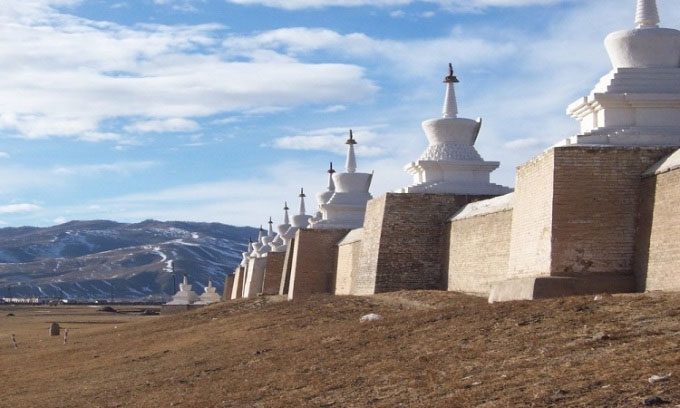Researchers have mapped in detail the capital built by Genghis Khan in central Mongolia 800 years ago.
The ruins of Karakorum, the capital of the Mongol Empire in the 13th century, still exist on the surface of the Earth. However, descriptions of the capital located in present-day central Mongolia are largely found in the records of European travelers. In a study published in the journal Antiquity on November 4, researchers have for the first time used advanced geophysical methods to create a detailed map of Karakorum, enhancing our understanding of this forgotten city.

Buddhist monastery built on the ruins of Karakorum. (Photo: Aloxe/Wikimedia)
Karakorum was established around 1220 when Genghis Khan set up his camp at the point where the Orkhon River valley meets the flat steppe. As an experienced leader, he recognized the strategic importance of this location. After Genghis Khan’s death in 1227, his son Ögedei chose this site as the capital of the empire. At Karakorum, Ögedei and subsequent khans constructed a magnificent palace to host envoys, merchants, artisans, and travelers along the Silk Road.
Lead researcher Jan Bemmann, an archaeologist at the University of Bonn, and his team spent 52 days surveying an area of 465 hectares using SQUID (Superconducting Quantum Interference Device). This technology is specialized for measuring terrain and magnetic fields underground to map unexcavated ruins beneath the surface. Subsequently, the research team combined the data collected with aerial photographs, historical records, and previous survey results to create a detailed image of the density and structure of Karakorum.
According to Bemmann, the new map allows researchers to identify the locations of large brick buildings and the roads running through the terrain. They were also able to pinpoint the residences of the upper class within the city walls. Bemmann’s team discovered that the capital of the Mongol Empire extended much further in the Orkhon River valley.
William of Rubruck, a Franciscan monk, visited Karakorum in 1254 and documented his journey. According to the University of Washington, his manuscript is one of the oldest and most detailed descriptions of the Mongol Empire from a Western perspective. The monk was captivated by the grandeur of the great palace in Karakorum.
Bemmann explains that Mongol soldiers captured the most skilled craftsmen from Central Asia and brought them to central Mongolia to build the capital. The Mongols were nomadic people and were not adept at city development, so they relied on prisoners. By the 15th century, Karakorum had been abandoned. Experts pinpointed the exact location of the city in 1889, but archaeological work there has been sparse in the following decades.





















































